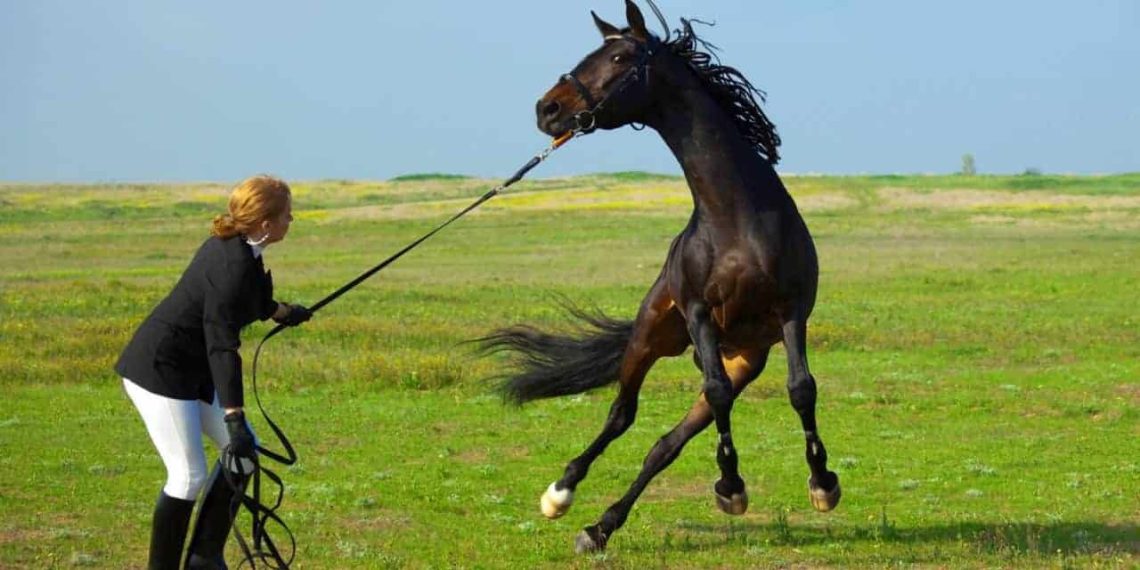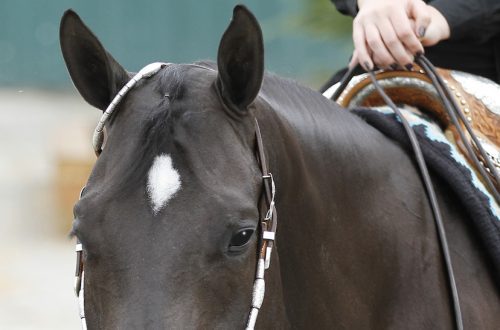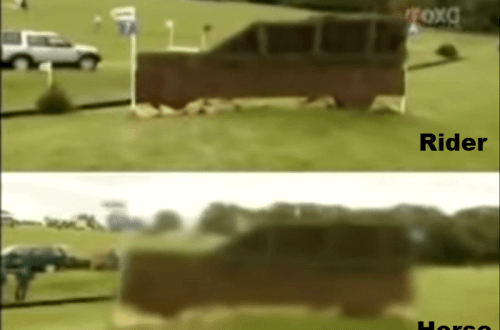
How to deal with a scared horse?
How to deal with a scared horse?
What to do in a situation where the horse is suddenly afraid of something? How to avoid unwanted actions on her part? How to give the horse more confidence?
These questions in this or that situation, perhaps, each equestrian asked himself.
Today they are answered by professionals: Jim Wofford and Olivia Loyacono.
Jim:
If you punish your horse for being frightened, you will teach him that every time he encounters an object that frightens him, he will be punished by you. Before you go to war with horse-eaters, teach your horse how to leg-yield. As soon as she starts to respond equally well to your call to yield in both directions, both at the walk and at the trot, you will have a good weapon. I do not want to say that you will completely cure the horse of fear with it. I guess mother nature made it so that absolutely fearless horses did not survive in the process of evolution …
If you see a clear representative of horse-eaters, lead the horse away from him, so that the horse does not react to the object. Walk past it about 20 meters, turn back and pass by again. Move as close as you can and, before his horse-eater’s horse, make a concession by arching its body outward from the object. Don’t try to get close to him – keep your horse’s attention on your signals, not on the object. Emphasize the correctness of the command, the stability of the arm and the activity of the leg. The inside leg pushing on the outside rein is the answer to most of our riding problems. Continue past the object for about the same distance as before, then turn back and walk past it again (this time a little closer), yield again by bending your horse outward. Your horse will be a little more responsive on one side. This is natural, and you will need to work hard on this weakness in order to develop it properly. In the meantime, continue your work – move back and forth, each time getting a little closer to the object. Be sure to finish the job while the horse is still responding to your messages. You should not expect your problem to be resolved in just one session. Take this exercise for the first time. Later, as you become more confident with your controls, try trotting back and forth while yielding. After all, you should be able to gallop past an object with either foot. However, you will need to learn shoulder-in before you try the canter. Since we only yield at the walk and trot, your horse would be embarrassed if we asked him to yield at the canter.
Two important points: 1) we can ask for shoulder-in in all three gaits, but their mechanics force us to use only leg-yield at the walk and trot; 2) finish the training while you have a good result and the horse is willing to follow your commands.
Olivia:
Training horses is an art, especially when it comes to their fight/flight response! Many horses get scared because they are really scared, but some smart young horses use this reaction as an excuse to get the job done. Our task as a coach and partner is to use the information and determine what provoked such a reaction. I analyze the age, experience and general behavior of the horse to make a decision. If I feel that the horse is really afraid, then my goal is to coax the horse to touch what he is afraid of. If I have to dismount, I dismount. First I will circle around, then I will pass by the object that scared the horse. I do the same with the “terrible” obstacle.
If the horse is older and likes to play a little, then I stay in the saddle, remain calm and ask the horse to move past the horse eater. The most important thing here is to focus on direction and speed. If you only think about getting past the horse eater, the horse will most likely try to go sideways or run around the object. Move slower and maintain your trajectory. If you keep reacting unemotionally over and over again, eventually your horse will learn to react in the same way. Good luck!
Jim Wofford, Olivia Loyacono (source); translation by Valeria Smirnova.





